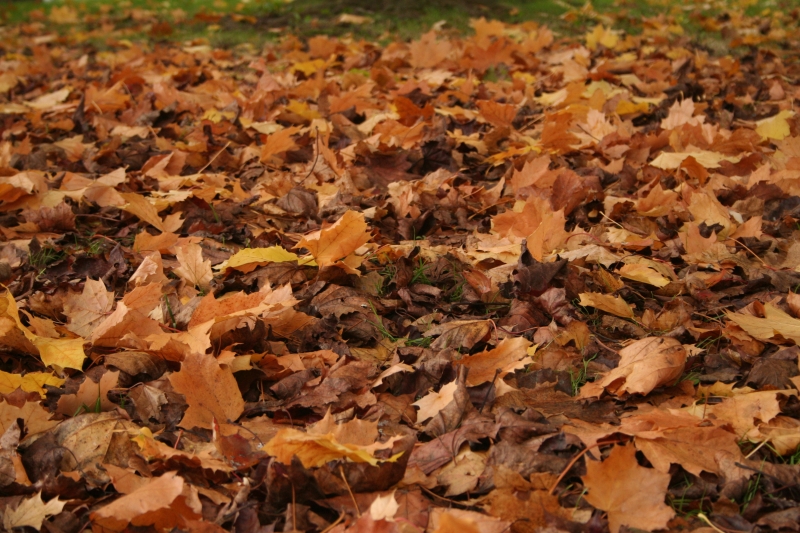Nutrition by Alex Crain
The H. haydeniana prefers dead
organic material, such as leaf litter; however they will eat dead
arthropods as well as roots and the shoots of young seedlings.
Millipedes have also been known to consume their own feces.
(Hopkin & Read 1992)

Figure 1. Maple leaf litter would be an ideal meal for a millipede
In the
rainforests on the coasts of British Columbia millipedes are the
main macrofauna and consume a large proportion of the annual
litter, H. haydeniana alone consumes close to 36% of
the litter. (Cárcamo et al. 2000) Although in some of the
millipede’s food sources, especially leaf litter there are other
chemicals that are not necessarily nutrients that have dietary
effects on the millipede, mostly negative. Phenol and tannic
acid are some of these detrimental chemicals, which are
naturally occurring within plants in small quantities. In an
experiment where the millipedes are exposed to less than 10% of
the acid for 7 days showed a statistically significant decrease
in rate of assimilation, as well as growth rate in the younger subjects. There was
also evidence of lower level of tissue glycogen, carbohydrates
and lipids. (Roy and Joy, 2009) However it was shown that the
millipedes are very sensitive to these chemical amounts and will
feed on certain leaf litter types if given a choice. (Joy et al.
1998)
The digestion of the litter takes place primarily in the foregut of the millipede where the salivary glands secrete enzymes, including catalase, cellulose and peroxidase. (Hartenstein 1982) After completely passing through the gut, undigested materials are released in the form of fecal pellets. About 90% of leaf litter, by mass, consumed by the millipede is egested in this form. (David & Gillon 2002) A comparison of the chemical composition of leaf litter versus the millipede’s feces indicates that a millipede utilizes only water-soluble and/or compounds such as carbohydrates, short-chained amino acids and lipids, compounds that are easily degradable. (Rawlins et al. 2006)
Hopkin,
S.P. and H.J. Read. 1992. The Biology of Millipedes. Oxford
University Press. Oxford, UK.
Cárcamo,
H.A., T.A. Abe, C.E. Prescott, F.B. Holl and C.P. Chanway. 2000.
Influence of millipede on litter decomposition, N
mineralization, and microbial communities in a coastal forest in
British Columbia, Canada.
Canadian
Journal of Forest Research 30: 817-826.
Roy,
S.N. and V.C. Joy. Dietary effects of non-nutrients in the leaf
litter of forest trees on assimilation, growth and tissue
composition of the detritivous soil arthropod
Anoplodesmus saussurei
(Humb.) (Polydesmida: Diplopoda).
Applied Soil Ecology
43: 53-60.
Joy, S.,
K. Sarkar, R. Pramanik and V.C. Joy. Digestion of carbohydrate
resources in decomposing leaf litter by
Anoplodesmus saussurei
(Humb.) (Polydesmida: Diplopoda).
Ecology, Environment
and Conservation 4: 117-122.
Hartenstein, R. 1982. Soil macroinvertebrates, aldehyde oxidase,
catalase, cellulose and peroxidase.
Soil Biology and
Biochemistry 14: 387-391.
David,
J.F. and D. Gillon. 2002. Annual feeding rate of the millipede
Glomeris marginata
on holm oak (Quercus
ilex) leaf litter under Mediterranean conditions.
Pedobiologia
46: 42-52.
Rawlins,
A.J., I.D. Bull, N. Poirier, P. Ineson, R.P. Evershed. 2006. The
biochemical transformation of oak (Quercus
robur) leaf litter consumed by the pill millipede (Glomeris
marginata).
Soil Biology and Biochemistry 38: 1063-1076.